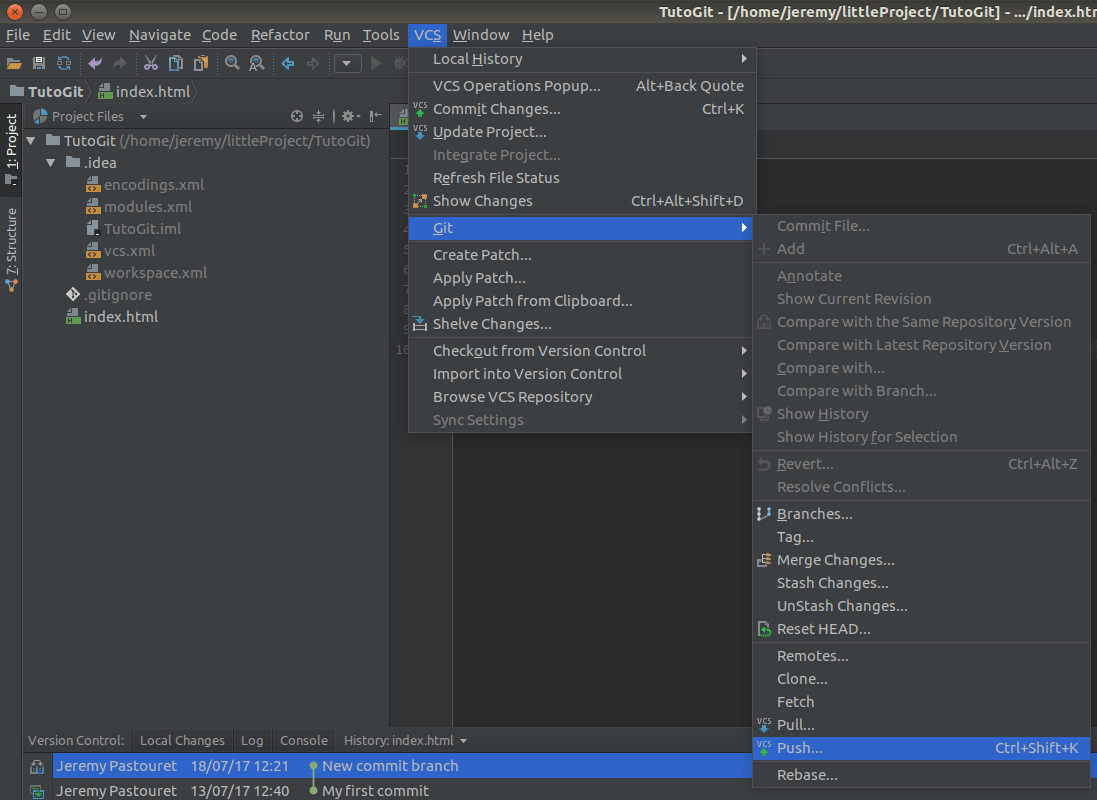Bitbucket is a distributed version control system (DVCS) code hosting site that supports Mercurial and Git. With Mercurial and Git, your data is distributed by definition but you still need a place to share it and keep track of your development. That is where Bitbucket comes in.
You may need to check why I choose bitbucket over github.
Bitbucket provides a fully-featured environment for managing your development project, including a code repository, a wiki (naturally backed by Mercurial and Git – you can clone it), a powerful issue tracker and easy collaboration with others.
Phpstorm bitbucket. How to set up Bitbucket in PhpStorm 2019, Step 1: Install Bitbucket Linky using this guide. Note Bitbucket Connector is no longer being developed. Step 2: Set up a new private repository End-to-end visibility & automation across the entire development process with Bitbucket®. Free code hosting for 5 users. Bitbucket - One place to plan projects, collaborate on code, test and deploy, all with free private repositories. PhpStorm - Professional IDE for PHP and Web Developers.
Simply put, Bitbucket takes the pain out of sharing code and lets you focus on what you do best: Code. Bitbucket offers both commercial plans and free accounts. It offers free accounts with an unlimited number of private repositories (which can have up to five users in the case of free accounts).
Here are quick steps to setup BitBucket Repository to you Eclipse Environment.
Step-1
Register for Bitbucket.
Step-2
Create Private/Public repository. It’s free compare to Github 🙂 .
Step-3
On Overview page https://bitbucket.org/dashboard/overview, look for your repository information.
Mouse hover will give you Repository URL which we will use later to import project into Eclipse.
Step-4

Now let’s make Eclipse ready for Git.
- Open Eclipse
- Click on
Helpmenu - Click
Install New Software
Step-5
Install eGit into Eclipse. Git version control with Eclipse (EGit) – Tutorial. How to use bitBucket with EGit in Eclipse.
URL: http://download.eclipse.org/egit/updates

Step-6
Select Eclipse Git Team Provider and JGit form option and click next and finish install.
Step-7
Now Open Perspective and choose Git from list.
Step-8
Click Clone Repository Button.
Step-9
Enter your Bitbucket URL and User Information as mentioned in below diagram. Click Next and Finish. No need to change other configuration in next window.
Step-10
You should see your Bitbucket repository now in eclipse.
Step-11
Now you may want to import the project so you can work on the source code.
- Click
- ‘Windows’ >
- ‘Open Perspective’ >
- ‘Resource’
- Click
- ‘File’ >
- ‘Import’ >
- ‘Git’ >
- ‘Projects from Git’ >
- ‘Existing local repository’ >
- ‘Select a Git Repository’ >
- ‘Import as General Project’ >
- ‘Next’ >
- ‘Finish’
- The code should then appear in your ‘Project Explorer’ window as a normal project
- Now make changes to your file as you want
- Look at ‘Git Staging’ view to see your changed files and Click ‘
Commit and Push‘
Phpstorm Bitbucket Plugin
Do let me know if you encounter any issue while setting this up. Now what? Now setup SmartGit with your BitBucket repository to do all kind of commit, put, etc GIT operations.
Join the Discussion
If you liked this article, then please share it on social media. Still have any questions about an article, leave us a comment.
Other Popular Articles...
So you’ve worked on some code forked from GitHub and want to send it back to the original repository… Chances are you’ll be doing this using a Pull Request. These let us tell others about changes we’ve pushed to a GitHub repository so they can review, comment and discuss the proposed modifications. Once a Pull Request is approved, the changes included in it are committed to a branch of the original repository.

Many open source projects are using this workflow: everyone can create a fork of the project. When a developer finishes some work, a Pull Request is created where project maintainers can do code reviews and discuss changes before accepting the contribution.
There’s no need to interrupt your coding streak and switch to a browser: Pull Requests can be opened right from within PhpStorm. Let’s see.
This functionality is available in IntelliJ IDEA, PyCharm, WebStorm, PhpStorm, RubyMine and AppCode.
Bitbucket Tutorial Pdf
Using the VCS | Git | Create Pull Request menu, we can select the target branch for our Pull Request as well as a title and description. Clicking OK will publish it to GitHub:
Clicking Show Diff gives us an overview of all changes that will be included in the pull request. The Log tab shows us a list of all commits and file modifications that will be proposed:
If needed, we can use the Diff tab to generate a per-file diff of all changes. Here’s a diff of the performance fix we’re creating a Pull Request for:
And while we’re at it, there are quite a few other options available for working with GitHub from within the IDE. Give them a try and let us hear your thoughts in the issue tracker, through the comments below or in our forums!
Develop with pleasure!
– JetBrains PhpStorm Team
